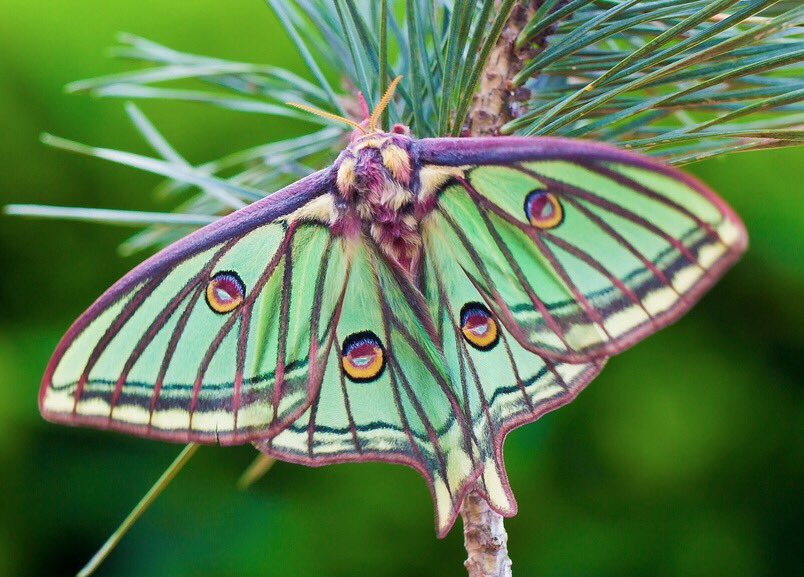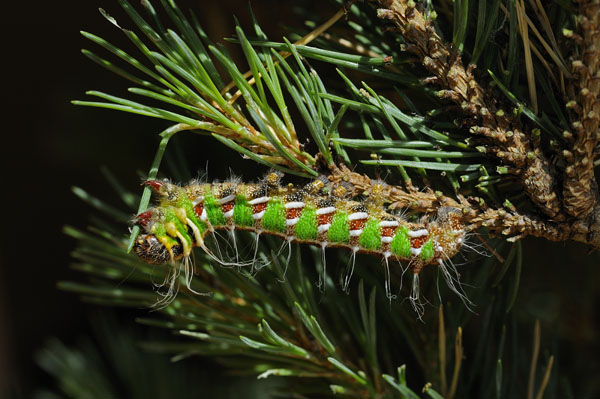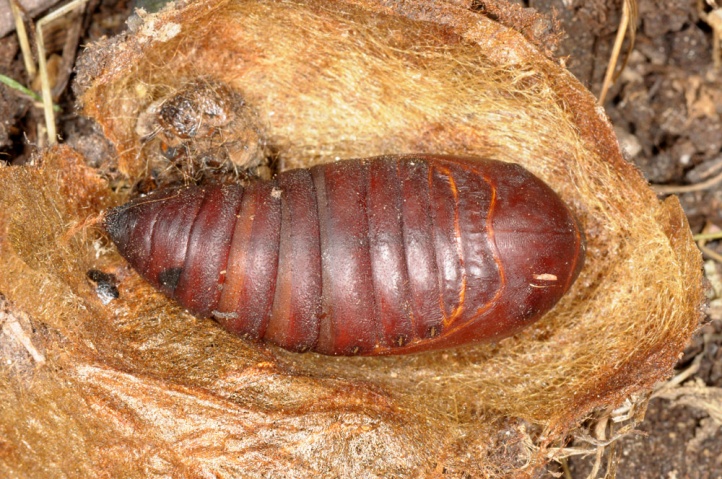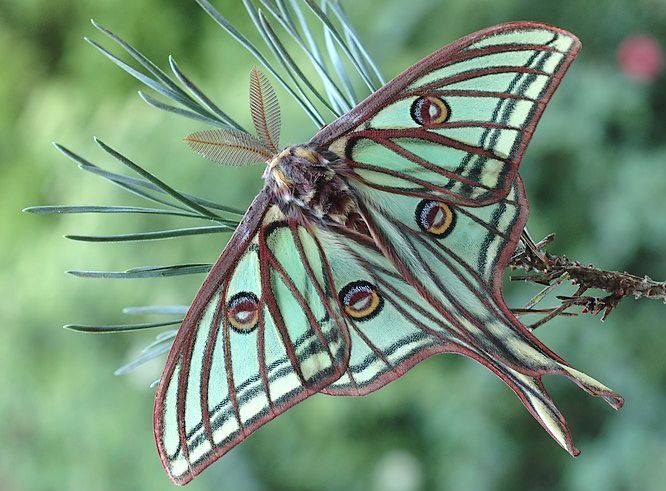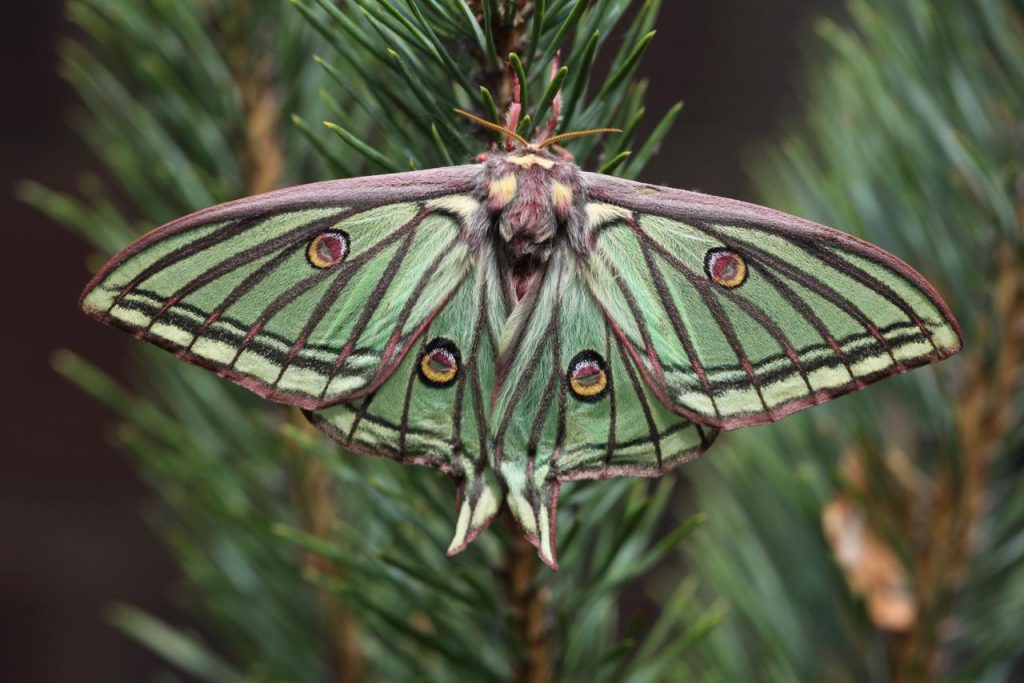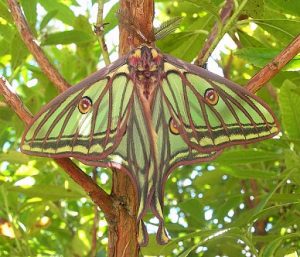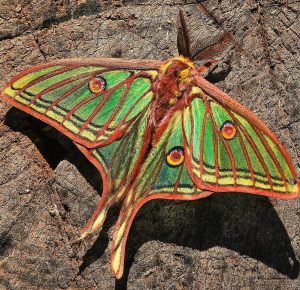Spanish Moon Moth (Graellsia isabellae)
Spanish moon moth of the Saturniidae family was described first in 1849 by Spanish entomologist Mariano de la Paz Graells y de la Agüera. This moth is native to parts of France and Spain, mostly occupying the pine forest regions.
pbs.twimg.com
Scientific Classification
- Family: Saturniidae
- Genus: Graellsia
- Scientific Name: Graellsia isabellae
Description and Identification
Adult Moth
Sexual Dimorphism: Present
The males have longer tails than females.
Color and Appearance: When the wings are opened, they are green with four prominent eyespots and a light brown border, as well as an extended tail. When the wings are closed, the color mostly remains the same, with two of the four eyespots visible.
Average wingspan: 6.35 – 10.16 cm
Flight pattern: Not recorded
Season: April – September
Egg
The eggs are green and round, mostly laid near the pines.
Quick Facts
| Distribution | France and Spain |
| Habitat | Dry and mountainous pine forest regions |
| Lifespan of adults | About a week |
| Host plants | Pine |
| Adult diet | Pine trees (while the larvae eat pine needles) |
Did You Know
The Spanish moon moth is crossed with the Indian moon moth to produce a hybrid.
Scientific Classification
- Family: Saturniidae
- Genus: Graellsia
- Scientific Name: Graellsia isabellae

